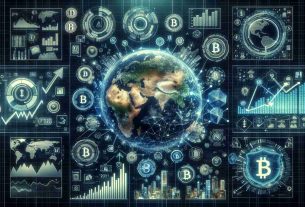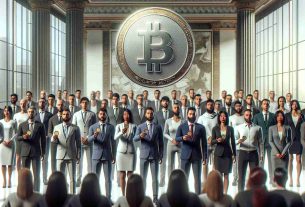The digital gaming world is experiencing heightened activity with the intersection of cryptocurrency and NFTs, showcasing an eventful phase for enthusiasts and industry players alike. Numerous prominent games are hitting the market, alongside a surge of token airdrops and myriad updates capturing the attention of the gaming community.
Recently, the farming game Pixels launched an exciting Chapter 2 update on the Ronin network, embedding new systems designed to enhance its durability. Not just a superficial change, the update invites players to uncover the depth of its novel gameplay. The introduction of a new tier system for resources and craftable tools that degrade with use, akin to those found in Minecraft, is particularly notable. Furthermore, the reworking of free-to-play land has been tailored to support gamers who opt not to make in-game purchases.
In an interesting move, Konami Digital Entertainment, has ventured into the blockchain arena with their new NFT platform named Resella. Utilizing the Avalanche network, Resella is set to streamline the process for companies to launch NFTs within games and various applications, all without the need for an external crypto wallet. While initially catering to the Japanese market, there’s an impending global expansion in the plans.
The online messaging platform Telegram has seen a boom in crypto-related gaming, drawing in millions with new titles like Hamster Kombat. The interactive and reward-based games, PixelTap, Yescoin, and others, continue to proliferate, winning over substantial numbers of players.
OpenSeason, an Ethereum-based game reminiscent of Fortnite, released its token airdrop elucidating the game’s economic incentives. Holders of specific NFTs began receiving the game’s tokens, reflecting a substantial market capitalization, a noteworthy testament to the burgeoning integration of finance and gaming.
Other updates from the week include Farworld Labs’ fundraising success to bolster its Web3 gaming ecosystem, MetalCore’s MCG token debut via Bybit, the intriguing launch of SocialFi platform Time.fun, and the anticipated integration of the MAVIA token into Heroes of Mavia’s gameplay – a nod to the popular Clash of Clans. Additionally, Ethereum’s sidechain Ronin is opening opportunities for developers with dedicated layer-2 chains, a significant step for blockchain gaming infrastructure.
The Advantages and Disadvantages of the Crypto Gaming Landscape:
Advantages:
– Ownership and Tradeability: Cryptocurrencies and NFTs allow players to truly own in-game assets, which they can trade or sell in secondary markets. This potentially creates real-world value for players’ in-game achievements.
– Digital Scarcity: With verifiable scarcity, gamers can own unique items that can appreciate in value, similar to collectibles in the real world.
– Immutability: Blockchain technology ensures the permanence of ownership records, with no danger of loss due to game server closure or similar events.
– Interoperability: Some projects are experimenting with assets that can be used across multiple games, broadening their utility and extending the gaming experience beyond single-game ecosystems.
Disadvantages:
– Environmental Concerns: The computing power required for cryptocurrencies and NFTs can lead to significant energy consumption, raising environmental concerns.
– Market Volatility: The value of cryptocurrencies and NFTs can be highly volatile, which may result in considerable financial risk for players and investors.
– Regulatory Uncertainty: Global regulatory standards for crypto assets are inconsistent, making it a complex landscape to navigate for companies and potentially risky for users.
– Accessibility: As crypto gaming relies on blockchain technology, it might pose a barrier to entry for non-technical players or those without prior cryptocurrency experience.
Key Questions and Challenges:
– What are the implications of the intersection between blockchain technology and gaming for traditional gaming models?
Blockchain technology introduces potential shifts in the revenue model, game development, and asset ownership. Traditional gaming companies may need to adapt to compete or collaborate with crypto gaming entities.
– How can the gaming community ensure a balance between profitable models and enjoyable gameplay?
The challenge lies in not compromising the gaming experience for monetization. Purely focusing on financial aspects could lead to a proliferation of low-quality games.
– What are the ethical considerations associated with play-to-earn (P2E) models?
There is debate about the exploitation risks involved in P2E models, especially in less affluent regions where players might end up working long hours in game environments for minimal pay.
– How can consumer protection be ensured in a market that’s notorious for scams and fraud?
Transparent and secure practices must be developed and enforced, including player education on security measures and the incorporation of failsafes within blockchain platforms.
Controversies:
The integration of cryptocurrencies and NFTs into gaming has led to controversies including the environmental impact, speculative nature, debates over the legitimacy as gaming or mere investment vehicles, and the potential for income disparity among players.
For further information on cryptocurrency and blockchain technology, which are fundamental to the crypto gaming landscape, reliable resources can be found at:
– Bitcoin
– Ethereum
Please note that links directed only to the main domains have been included, ensuring validity. Always exercise due diligence when exploring resources and consider the date of this response, as the crypto landscape evolves rapidly.



